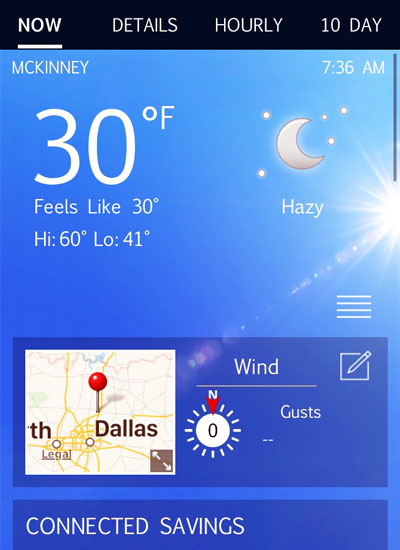Once You’ve Had Your First Freeze
People start asking me questions about the first of October for which the only good answer is “As soon as you’ve had your first freeze.” Several common gardening tasks require that plants be completely dormant, and the first freeze is what puts them there.

Photo: The 30-degree low temperature that folks around DFW saw this past Sunday morning was cold enough to let winter begin. You’ll hear the term “hard freeze,” however, and that would imply temperatures down into the 20s that stay there for six or eight hours. If you’re unsure whether it got cold enough for the tasks on this list, just wait a couple more weeks. Print the list and save it. It will be just as good then.
Since many of your saw your first freeze last Saturday and Sunday, and since most of the rest of you soon will, here is the list of things that have now become current:
• Transplant established trees and shrubs. It would be best if they could have been exposed to temperatures in the 20s. If that has already happened, dig away. Use a sharpshooter spade to sever roots cleanly. Hold soil firmly in place in the root ball to minimize shock.
• Prune frozen foliage and flower stalks of summer and fall perennials. Trim frozen stems back to within an inch or two of the ground. For types with woody stems such as autumn sage, trim plants back by 50 percent.
• Use shredded tree leaves you’ve bagged on the lawn to mulch and protect perennials over the winter. They’ll moderate the rates at which soil temperatures change. That lessens the chances of cold-weather injury.
• Remove warm-season annuals and replace with winter color. Just assume that plants like begonias, periwinkles, pentas and angelonias are frozen and that they won’t come back. In deep South Texas they might come back. Trust your prior experiences and localized help.
• Begin winter pruning (with a few exceptions). This is the time for reshaping of erratic growth, but try not to whack plants back repeatedly each winter. If the plants continue to grow too tall or wide, either move or remove them entirely. That certainly applies to crape myrtles. Don’t ever “top” them for any reason. It is horrible horticultural practice. People will argue, but experts will agree: they’re wrong. Also, wait to prune types of plants that are tender in your area’s winters. For much of Texas that could be oleanders, gardenias and pittosporums. Wait to prune them until later in the winter.
• Double check thermostats and heaters in your greenhouse. Have standby heat source should it be needed. For example, if you have natural gas or propane heat, it probably has a blower to propel the warm air. If power goes out, the blower won’t work and the heater may shut down entirely. Think it all through.
• Drain or run mower and other power equipment until gas tanks are empty (unless they’re things you’ll be using again over the winter).
• Take equipment in for repairs now, before shops fill up in anticipation of spring. If you need new equipment, perhaps they’ll be closing the 2016 models out at a discount.
• Get frost cloth pieces measured, cut, folded and into storage bags so that you can quickly protect tender vegetation during extreme cold this winter. It’s a lot easier to do when you’re not under stress. (And when it’s not windy and 28 degrees!)
• Send samples to Texas A&M Soil Testing Laboratory now to avoid the spring rush. All the necessary information is at this website: http://soiltesting.tamu.edu
• Make plans now for spring landscape improvements. Begin to make notes and collect photos. Find a landscape contractor, designer or architect with whom you can work, and schedule your appointment now, before they get washed under in spring.
• Consider gift cards from local independent businesses, particularly nurseries and hardware stores for your Christmas shopping. They’re great places to check off a lot of names on your list and to give gifts that will keep giving for many years.
